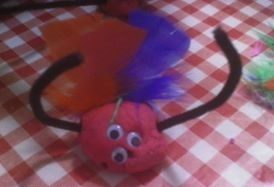The picture book that I have chosen to use for this task is ‘We’re going on a Bear Hunt‘ by Michael Rosen. I chose this book because it’s one of my favourites, and one which (in my experience) never fails to capture children’s imagination.
I have used this story to explore language, and for various dramatic and creative play experiences, but I have never before taken a particular focus on the mathematical element. That being said, it is obvious that there is plenty of mathematical language and concepts throughout. Here are some of the ones that I spotted:
- language of measurement and size: “we’re going to catch a BIG one” and “long, wavy grass”
- positional language – over/ under/ through
- counting – “one shiny, wet nose, 2 big furry ears…”
- rhythm and repetition
If I were to use this story with my class, there are various activities which I may use to focus in on some of these concepts. I would always begin by reading the story with my class. I love the actions which Michael Rosen uses in his reading and would use the same, or my own variation of these to engage the children.
I have chosen 2 mathematical concepts to explore further: measurement and counting.
Measurement
To continue with the concept of measurement and size, I would encourage the children to explore tape-measures, rulers, measuring sticks and even non conventional measurement resources like lego blocks. I would then provide opportunities for the children to begin to sort items that they had measured into groups of big/ medium/ small etc. I would model and encourage the different words and language which can be used to describe these measurements: large, tiny, huge, little…
Another fun activity could be to have the children arrange themselves in a long line from biggest to smallest or visa versa. This activity could be done as a transition (for example when lining up for lunch) and would help to secure the children’s understanding.
Counting
 One way to continue learning about counting and labelling, in the way that the story does, could be to use the same method to describe something else. I would provide playdough with a variety of materials such as googly eyes, straws, sequins, string, etc and allow the children to create their own creature. I would encourage them to make their creature as weird and wacky as they liked, because when they are finished I would ask them to describe it to their friend. This activity could be linked to learning about description, or could simply be about how many eyes/ ears/ noses etc that their creature has.
One way to continue learning about counting and labelling, in the way that the story does, could be to use the same method to describe something else. I would provide playdough with a variety of materials such as googly eyes, straws, sequins, string, etc and allow the children to create their own creature. I would encourage them to make their creature as weird and wacky as they liked, because when they are finished I would ask them to describe it to their friend. This activity could be linked to learning about description, or could simply be about how many eyes/ ears/ noses etc that their creature has.
